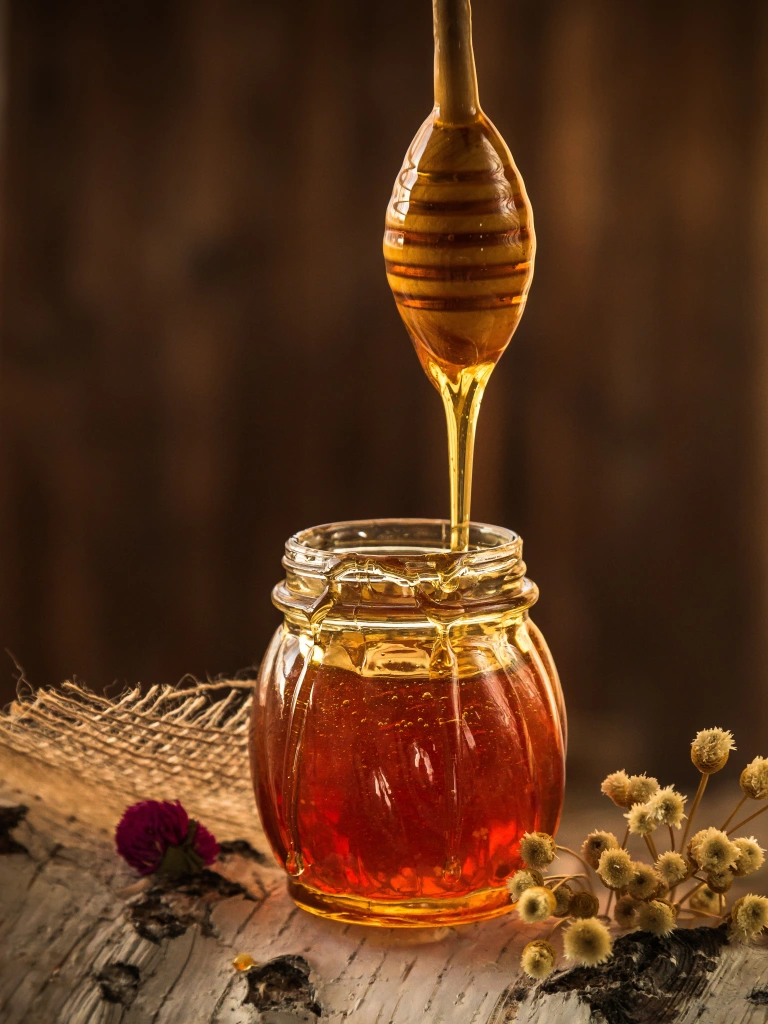
Natural Honey: Honey Viscosity, Honey Liquidity, Honey Fluidity, and Honey Crystallization
Honey is a complex natural product with unique physical properties that vary depending on its botanical source, composition, and environmental conditions. Terms like viscosity, liquidity, fluidity, and crystallization are often used to describe honey’s texture and flow behavior, yet they refer to different scientific concepts. Understanding these differences is essential for beekeepers, processors, and consumers who care about honey quality.
1. Viscosity – The Thickness of Honey
Definition:
Viscosity is the measure of a liquid’s resistance to flow. For honey, it describes how thick or syrupy it is. The higher the viscosity, the more slowly honey flows.
Why It Happens:
- Honey’s viscosity is primarily determined by water content (typically 14–20%).
2. The higher the water content, the lower the viscosity (thinner honey).
3. Temperature has a huge influence: warm honey flows easily, while cold honey becomes much thicker.
4. The concentration of sugars (mainly fructose and glucose) and minor compounds like proteins, waxes, and pollen also affects viscosity.
Example:
- Fresh acacia honey tends to have low viscosity and pours easily.
- Sunflower honey can be more viscous and slow to flow even at room temperature.
2. Liquidity – The Physical State
Definition:
Liquidity refers to honey being in a liquid state rather than semi-solid or crystallized. It’s more about whether honey is runny or set.
Why It Happens:
- Freshly extracted honey is almost always liquid because the sugars are still dissolved in water.
2. Liquidity can be maintained if honey has a high fructose-to-glucose ratio (fructose stays dissolved longer).
3. Environmental conditions like warm storage help maintain liquidity.
Important Note:
Liquid honey does not necessarily mean high quality—it could be liquid due to heating, which may reduce some enzymes and aroma compounds if done excessively.
3. Fluidity – How Easily Honey Flows
Definition:
Fluidity is related to viscosity but focuses more on how freely and quickly a liquid moves under gravity.
Why It Happens:
- Honey with high fluidity has low resistance to motion (low viscosity).
2. Fluidity is influenced heavily by temperature: warm honey flows faster.
3. Botanical origin matters—honeys rich in fructose (e.g., tupelo honey) are more fluid at the same temperature than those rich in glucose (e.g., canola honey).
Example:
If you tilt a jar, honey with high fluidity pours in a smooth stream; with low fluidity, it moves sluggishly or in lumps.
4. Crystallization – The Transition from Liquid to Semi-Solid
Definition:
Crystallization (also called granulation) is the natural process where dissolved sugars (mainly glucose) come out of the solution and form tiny crystals, making honey thicker or even solid.
Why It Happens:
- Glucose is less soluble in water than fructose. When glucose concentration exceeds solubility limits, crystals start to form.
2. Low temperatures (10–15°C) accelerate crystallization.
3. Pollen particles, tiny air bubbles, or other microscopic solids act as nucleation sites for crystal formation.
4. The botanical origin determines the rate—canola honey crystallizes very quickly, while acacia honey can remain liquid for years.
Crystallization is Natural:
- It does not mean honey is spoiled.
- Crystallized honey can be returned to liquid form by gentle warming (not exceeding 40°C to preserve enzymes and aroma).
5. How They Differ
| Property | What It Describes | Main Cause | Change with Temperature |
|---|---|---|---|
| Viscosity | Thickness or resistance to flow | Water content, sugar ratio | Decreases when warm, increases when cold |
| Liquidity | State: liquid vs semi-solid | Freshness, fructose content, heat | Maintained longer in warm storage |
| Fluidity | Speed and ease of flow | Temperature, sugar composition | Increases when warm |
| Crystallization | Sugar solidification into crystals | High glucose, cool temp, particles | Faster at 10–15°C, slower when warm |
6. Practical Implications for Honey Handling
1). Control storage temperature to slow crystallization for markets preferring liquid honey.
2). Avoid excessive heating to retain natural enzymes and flavor.
2. For Consumers:
a. Crystallized honey is safe and natural—texture change does not mean loss of quality.
b. If needed, liquefy gently in warm water (max 40°C).
? Key Takeaway:
- Viscosity tells you how thick honey feels.
- Liquidity tells you whether it’s in a runny state or not.
- Fluidity tells you how fast it flows.
- Crystallization is a natural process changing honey from liquid to semi-solid.


